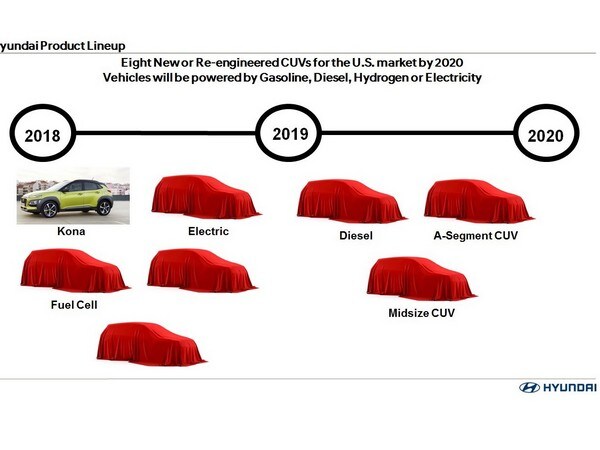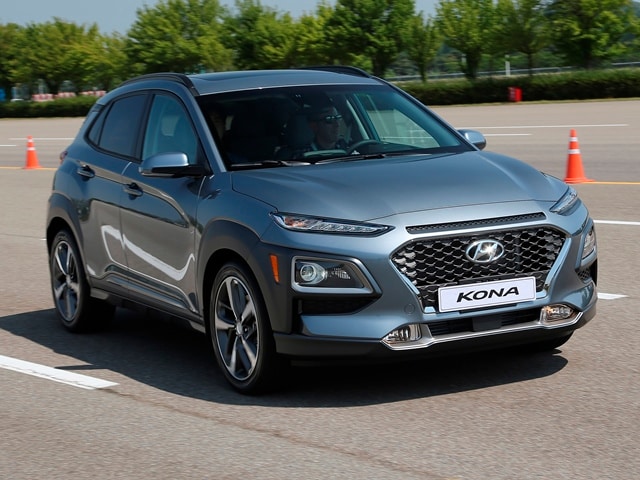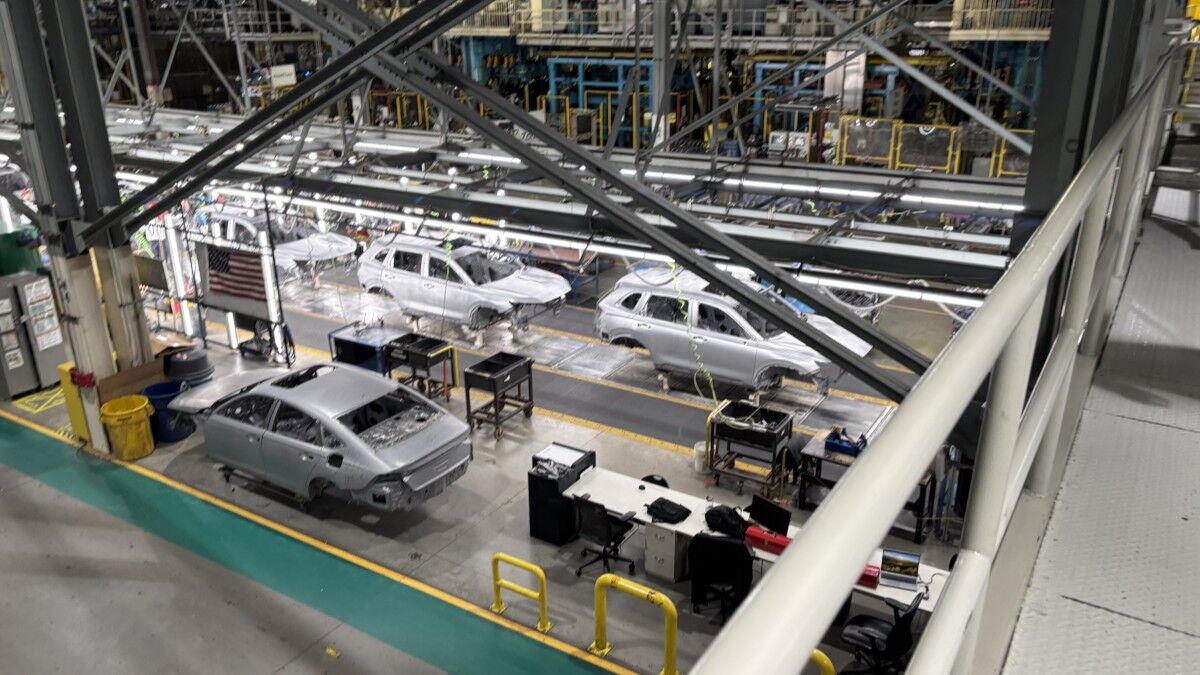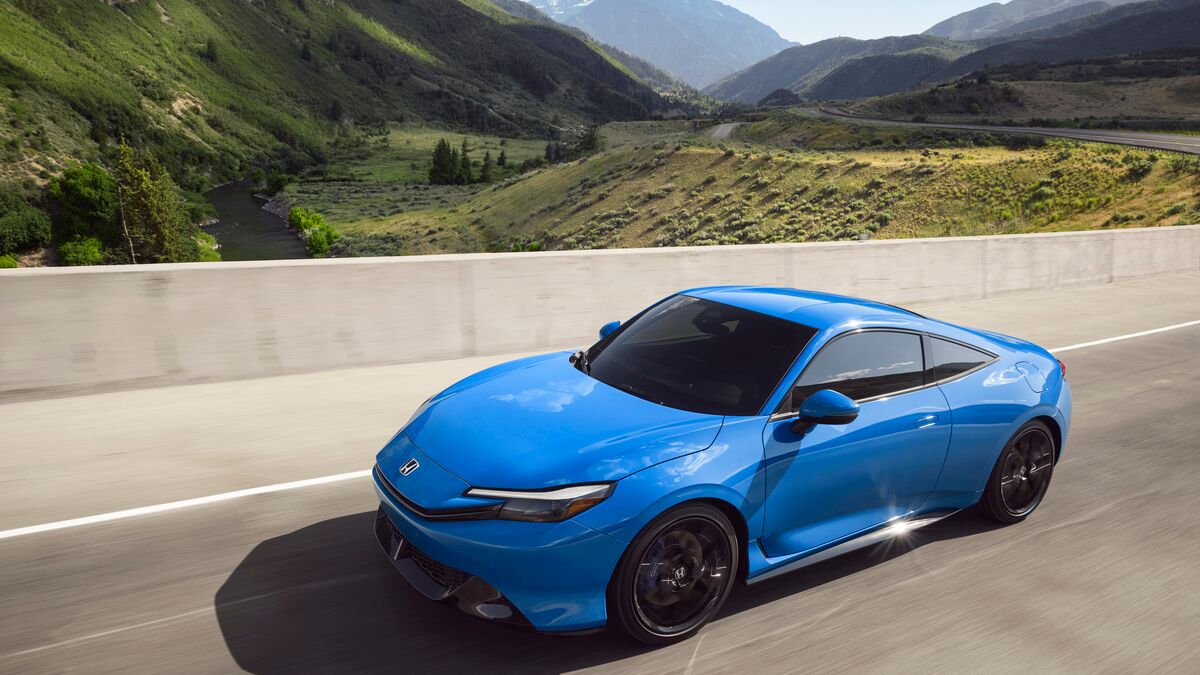In a vehicle market with an increasing appetite for crossover SUVs, Hyundai’s previously robust sales growth has been slowed with a product portfolio dominated by passenger cars. Hyundai’s sales results for October reflect a 15 percent decline overall versus the same month in 2016, despite a 12 percent increase in sales of its three SUVs: Santa Fe Sport, Santa Fe, and Tucson.
Hyundai intends to correct that imbalance with an SUV product blitz over the next three model years by introducing eight all-new or redesigned crossovers, beginning with the Kona, a subcompact entry that will debut at the upcoming Los Angeles auto show.
Other new vehicles will be unveiled at a succession of 2018 shows beginning with the Consumer Electronics Show in Las Vegas, January 8; the North American International Auto Show in Detroit, January 16; the Chicago Auto Show, February 8; and the New York show March 30. Among them will be a makeover of the Veloster three-door hatchback (one door on the driver’s side, two on the passenger side), and a new fuel cell electric vehicle. This bigger vehicle with a dedicated chassis, will replace the current Tucson-based version.
Power diversity
Augmenting the product onslaught, Hyundai also plans to diversify its range of power sources. In addition to the new fuel cell stack, there will be a pure battery electric vehicle, plug-in hybrids, conventional hybrids, a turbodiesel, and new gasoline engines. When the revised powertrain inventory is complete, Hyundai anticipates being able to credit itself with the most comprehensive and diverse propulsion systems in the industry.
Still, for all its embracing of future tech power sources, Hyundai does not foresee the demise of internal combustion in the near future. ICE engines will continue to dominate the scene through 2025 at least, according to Hyundai, and refinements will continue to go forward. Accordingly, Hyundai is updating its ICE engines for primary propulsion as well as hybrid applications. In connection with its upcoming product blitz, Hyundai will be offering five different ICE engines, some of them essentially all new.
The first will be its V-6 Lambda engine family that includes 3.0-, 3.3-, and 3.8 liter-versions, a 3.0 for foreign markets and turbocharged 3.3- and 3.8-liter variants destined for the Genesis G70 and G80. Updates to the twin-turbo 3.3 include an air-cooled intercooler, high pressure direct injection, high energy ignition, redesigned combustion chambers, reduced internal friction, electronically-controlled thermostat, sodium-filled exhaust valves (a V-6 first, according to Hyundai), increased exhaust gas recirculation, and new cylinder heads integrated with their exhaust manifolds. Output remains the same—365 horsepower, 376 lb-ft of torque—but efficiency improves.
Also: Check out all of the latest news from the LA Auto Show
Internal combustion futures
On the near horizon for Hyundai’s ICE development: a return to port fuel injection (from direct injection) in pursuit of increased efficiency and meeting tougher emission standards; thermal efficiency elevating from the current 40 percent to 50 percent; 48-volt ignition as well as such advanced tech as variable compression ratio and “intellectual propulsion control,” allowing the engine’s digital brain to “learn” the driver’s habits and operate as efficiently as possible within those parameters.
Like other carmakers, Hyundai is also moving forward with autonomous vehicles. Currently, the company offers Highway Driving Assist, namely a Level Two system capable of adjusting to open highway conditions, but far from fully self-driving, on a number of cars in South Korea: G70, G80, G90, Azera, and Sonata. Genesis plans to make Highway Driving Assist available in the G90 sedan for model year 2019.
Development is also going forward with fully autonomous Level Four and Five systems, which includes on-road development licensed to operate in Nevada. But specifics about when Hyundai and/or Genesis fully self-driving vehicles might reach the market are vague.









